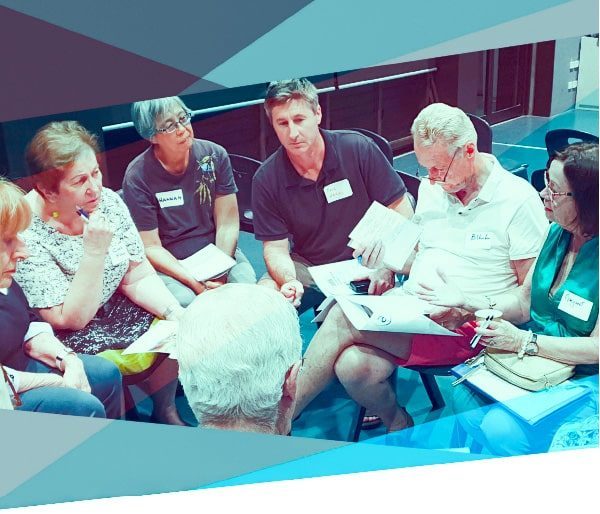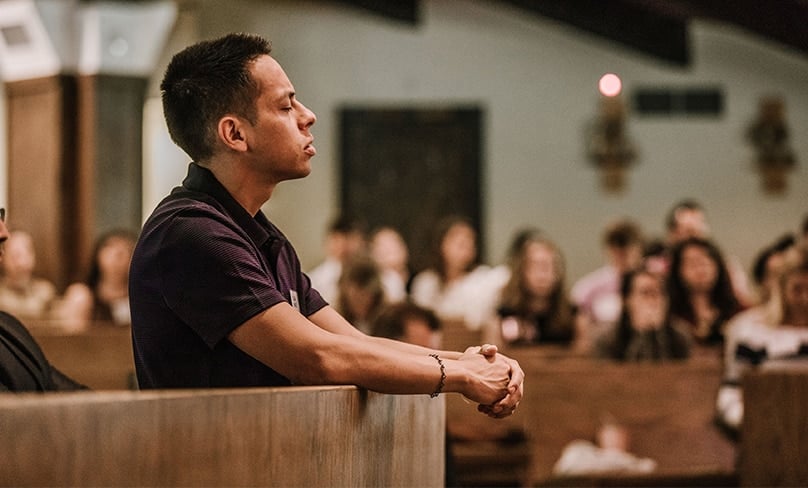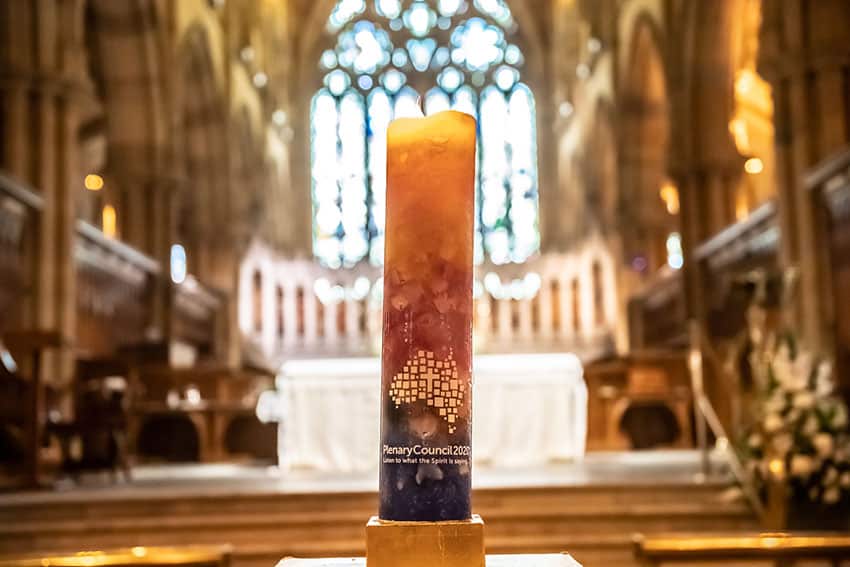
A Plenary has wide-ranging power and has gone through an extensive process to get to this week’s Second Assembly
What is the Plenary Council?
A Plenary Council is a gathering of the local Church that has both legislative and governance authority, and can pass binding resolutions or decrees.
The fifth Australian Plenary Council has been convoked under canon law, and according to its statutes “aims to bring to fuller realisation within Australia the vision of the Second Vatican Council regarding the nature and mission of the church”.
What has happened to date?
The Plenary has unfolded in a number of phases. The first phase, ‘Listening and Dialogue’, was an open listening exercise in which the Plenary asked the people of God in Australia, “What do you think God is asking of us in Australia at this time?”
Submissions were received from 12,758 individuals and 4699 groups. People aged 50 or over made up 44 per cent of individual submissions, while under-25s made up 14 per cent.
Around 50 per cent of participants in this first phase were female, 30 per cent were male and the remainder didn’t state their sex.
The second phase took this material and transformed it into the “national themes for discernment” through further writing and discernment groups, and from there transformed it into an Instrumentum Laboris, or working document.
“The discussion was at times quite vigorous, as the closing statement of the first assembly noted: ‘there is no shortage of passion and charisms among the community of believers’.
The first assembly was held from 3-10 October 2021. Because of the COVID-19 pandemic it was held virtually.
The key themes discussed at the first assembly were conversion, prayer, structures, institutions, formation and governance. Of particular importance was the discussion of “going to the peripheries” and listening to those hurt by the Church.
The discussion was at times quite vigorous, as the closing statement of the first assembly noted: “there is no shortage of passion and charisms among the community of believers”.
The drafting committee was tasked with transforming the first assembly proposals from small groups and individuals into motions to be voted on at the second assembly. The final Framework for Motions was released in May.

How will the second assembly work?
The second assembly opens with Mass at the shrine of St Mary MacKillop at Mary MacKillop Place, North Sydney, on Sunday 3 July. The closing Mass will take place on Saturday, 9 July.
Each day the 277 members will gather at St Mary’s Cathedral College Hall to debate and vote on each of the motions in the framework.
All members who aren’t bishops get a non-binding consultative vote on motions each day, which passes on a two-thirds majority. An approved motion is then referred to the bishops for a decisive vote the following morning, also on a two-thirds majority. The final decrees of the Plenary Council will be sent to Rome for review and approval before being published.
“Each diocese has nominated members to represent it at the Plenary Council. There are also a steering committee support staff, theological advisors (periti), canon lawyers and others to support the Plenary’s work.”
Who participates in the Plenary Council?
The president of the Plenary Council is Australian Catholic Bishops Conference president Archbishop Timothy Costelloe SDB of Perth. The vice-president is Bishop Shane Mackinlay of Sandhurst, who was previously master of Catholic Theological College Melbourne.
Each diocese has nominated members to represent it at the Plenary Council. There are also a steering committee support staff, theological advisors (periti), canon lawyers and others to support the Plenary’s work.
Members of Catholic Religious Australia, the Church’s seminaries and universities, Catholic agencies like St Vincent de Paul, and representatives from the Eastern Churches and other ecclesial movements are also present.

What are the issues?
The Framework for Motions has around 30 motions, the full text of which are available on the Plenary Council website.
Key issues include an apology for victims of child abuse, the promotion of women, moves to incorporate First Nations Catholics more into the life of the Church and to endorse the Uluru Statement from the Heart, and an awareness of the need for “ecological conversion”.
Further motions propose to introduce a “ministry of preaching” for lay people at Mass, increase the use of the communal “third rite” of reconciliation, and establish new governance structures.
“The term synodality comes from Greek words meaning “to walk together” and signals a shift from a “top-down” Church to one in which lay people and clergy are co-responsible.”
What does Synodality mean?
The Plenary Council takes place alongside a change of emphasis in the Church, driven by Pope Francis, in the lead-up to the 2023 Synod on Synodality in Rome.
The term synodality comes from Greek words meaning “to walk together” and signals a shift from a “top-down” Church to one in which lay people and clergy are co-responsible.
Listening, dialogue, attentiveness to the “signs of the times”, spiritual discernment and openness to those on the margins are some of the hallmarks of the synodal approach.
